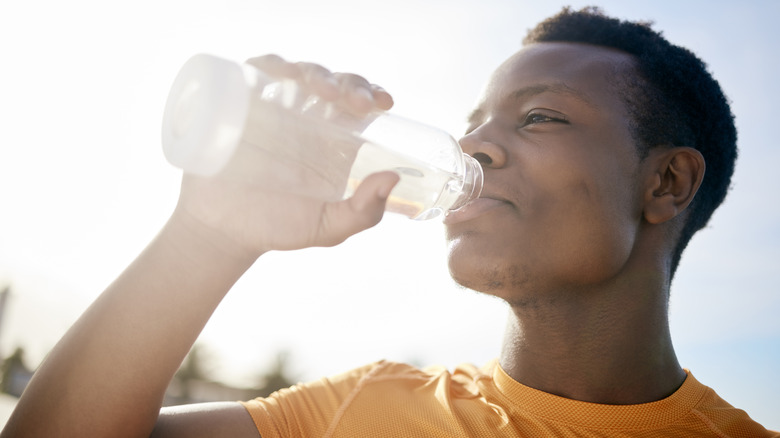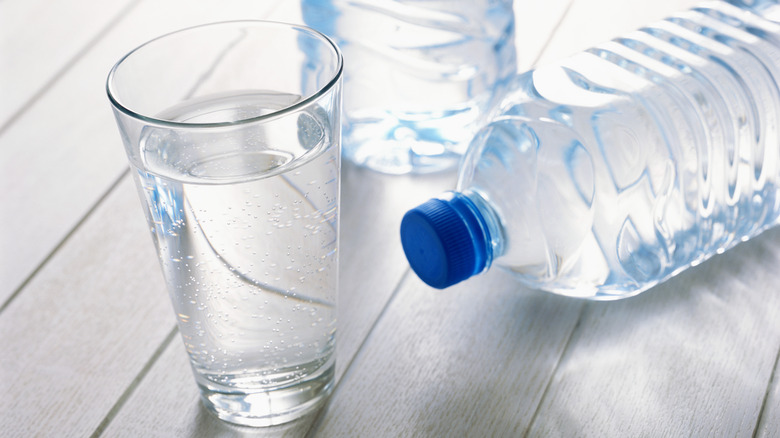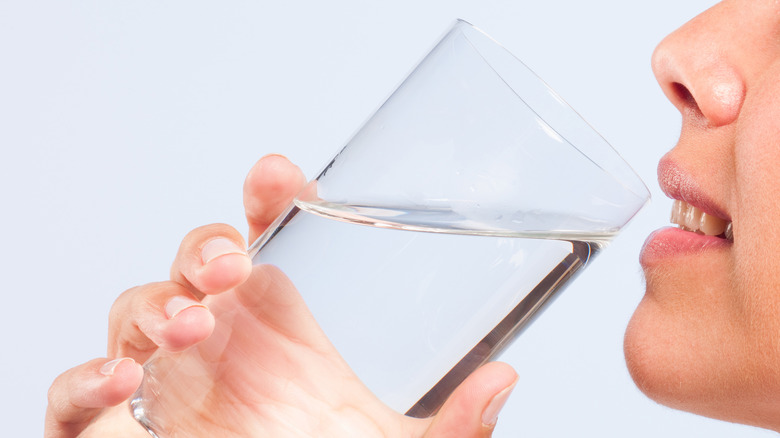How The State Of Your Taste Buds Can Change The Flavor Of Water
It has only been in the last 100 years or so that scientists have begun to understand that water does indeed have flavor. This began in the 1920s when water flavor was attributed to aftertaste, meaning water reacted to whatever you had tasted before to produce a contrasting flavor. The real mechanism behind water's flavor has since been identified, and as it turns out, it's our own saliva.
Our saliva contains quite a large number of chemicals. The taste buds in our tongues get used to the taste of these chemicals because they're in contact with them constantly, but when something new is introduced, like a large gulp of water, a very interesting process is set in motion. As the saliva is washed away by water, our taste buds suddenly experience the exact opposite flavors that they're used to tasting. This is why, since our saliva is slightly salty, we experience water as having sweetness, with perhaps a touch of bitterness as well.
The role saliva plays in taste
As scientists are increasingly understanding, our saliva and taste buds are constantly working together to influence the way we experience flavor. Saliva can also influence the way we experience textures and aromas and serves a fascinating function as a kind of middleman between the food and drinks we consume, and the way our taste buds interpret them. In other words, we're not just tasting foods, we're tasting the combined flavors of saliva and food together, as interpreted by our taste buds. The latter, by the way, are small receptor cells hidden within the bumps, or papillae, on our tongue.
So when we taste water, we're really tasting water and saliva together. But here's the really weird part. Our saliva is almost entirely composed of water (99%), so in large part, we're tasting water mixed with more water. However, the source of the flavor is coming from the other 1%, which is made up of salts and protein. We also have to take into account the underlying chemical molecules which exist in saliva; mineral ions of phosphate, calcium, and potassium. There are also enzymes, including a couple — amylase and lipase — that contribute not only to flavor but also help the digestive process.
How water gets its flavor
When you're trying to hydrate yourself with water, the flavors may vary due to the interaction of our taste receptors and the inherent flavors of different waters. What we consume before drinking water can have a perceptible impact on how we perceive its flavor. That's because our taste buds get used to whatever they've sensed most recently, and must readjust when confronted with something new. In addition, our saliva can retain flavor and aroma compounds from prior meals or beverages, which also affects how water flavor is perceived.
But flavors are already present in water. Typically, these flavors are related to mineral content, which can vary according to where the water was sourced. Minerals such as calcium, magnesium, and phosphorous are all commonly found in sparkling and tap waters, and although they may only be present in minute traces — they're measured in parts per million, after all — they're still discernible to our taste receptors. This was confirmed by a 2013 study published in the National Library of Medicine, which showed that certain minerals had a more noticeable impact in terms of flavor. So it's not just our taste receptors that are contributing to water's perceived flavor. Water does have taste, and it can vary from bottle to bottle or brand to brand.



